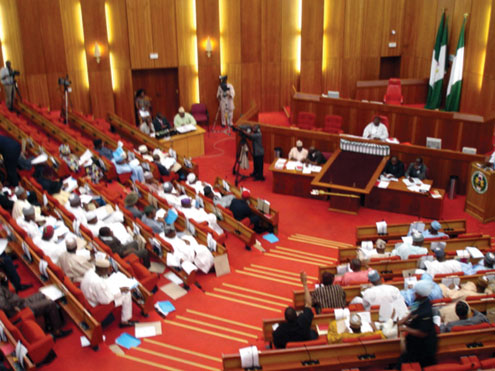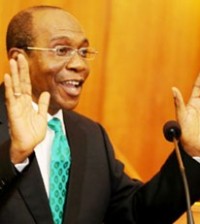Nigeria economy records $51b forex inflow
Nigeria economy recorded a total foreign exchange inflow of $51.02 billion in the first half of 2011, representing an increase of 29.8 per cent over the previous year’s figure.
According to the Economic Report for the first half of 2011 released by the Central Bank of Nigeria (CBN) yesterday, the increase reflected the rise in oil receipts and autonomous sources. Of the total, inflow through the CBN stood at $19.6 billion or 38.4 per cent, while the autonomous sources amounted to $31.4 billion or 61.6 per cent.
The total outflow of foreign exchange through the economy during the review period also rose, by 21.2 per cent to $21.32 billion from its level in the corresponding period of 2010. The development was due to the increased Wholesale Dutch Auction System utilisation.
The report also indicated that the number of reported cases of attempted and/or successful fraud/forgery in the banking industry declined to N6.5 billion, involving a total of 1,393 cases. Out of this number, 410 cases were successful and resulted in a loss of N1.95 billion to the banks, compared with 5,960 reported cases of fraud and forgery, involving N11.6 billion with actual loss of N8.0 billion in the second half of 2010.
Similarly, 116 Automated Teller Machines-related cases valued at N17.2 million were reported, compared with 411 cases amounting to N82.2 million recorded in the second half of 2010. The development was attributed to the improvements in risk management practices in the banking system.
The average Capital Adequacy Ratio (CAR) of the 16 non-intervened banks was 21.5 per cent, while the CAR of the eight intervened banks was -53.5 per cent. Overall, the average CAR of the industry stood at five per cent, representing a decline of two percentage points from its levels at end-December last year and a shortfall of three percentage points relative to the Basel II minimum requirement of eight per cent.
Banks’ industry-wide average liquidity ratio, at 50.3 per cent, was above the 30 and 47.5 per cent minimum requirement and the level at end-December 2010. One bank, however, failed to meet the stipulated ratio, compared with the 100 per cent compliance achieved at end-December 2010.
The banks’ industry-wide average liquidity ratio (LR) exceeded the 30 per cent minimum requirement, while the ratio of non-performing credits to total loans at 10.4 per cent was below the acceptable contingency threshold of 20.0 per cent for the industry.
The CBN report also indicated that the volume and value of cheques cleared stood at 16,188,775 and N9,919.05 billion, compared with 18,458,480 and N10,412.12 billion in the second half of 2010.
Also, the ratio of non-performing loans (net of provisions) to capital declined to 34.7 per cent from 64.2 per cent at end-December 2010. The development was attributed to the acquisition of N2.73 trillion eligible bank assets (EBAs) by AMCON and the improved risk management practices by banks. The activities of AMCON had significantly improved the quality of DMBs’ credit portfolio.
At N8,521.4 billion, aggregate institutional savings at end-June 2011 increased by 42.9 per cent over the level in the corresponding half year of 2010. The DMBs remained the dominant savings institution, accounting for 99 per cent of the total. Activities on the floor of the Nigerian Stock Exchange were mixed, as the market capitalisation (MC) grew by 36.6 per cent, to close at N11.2 trillion, while the All-share Index (ASI) declined by 1.6 per cent to 24,980.20 at end-June 2011.
Source : The Nation








